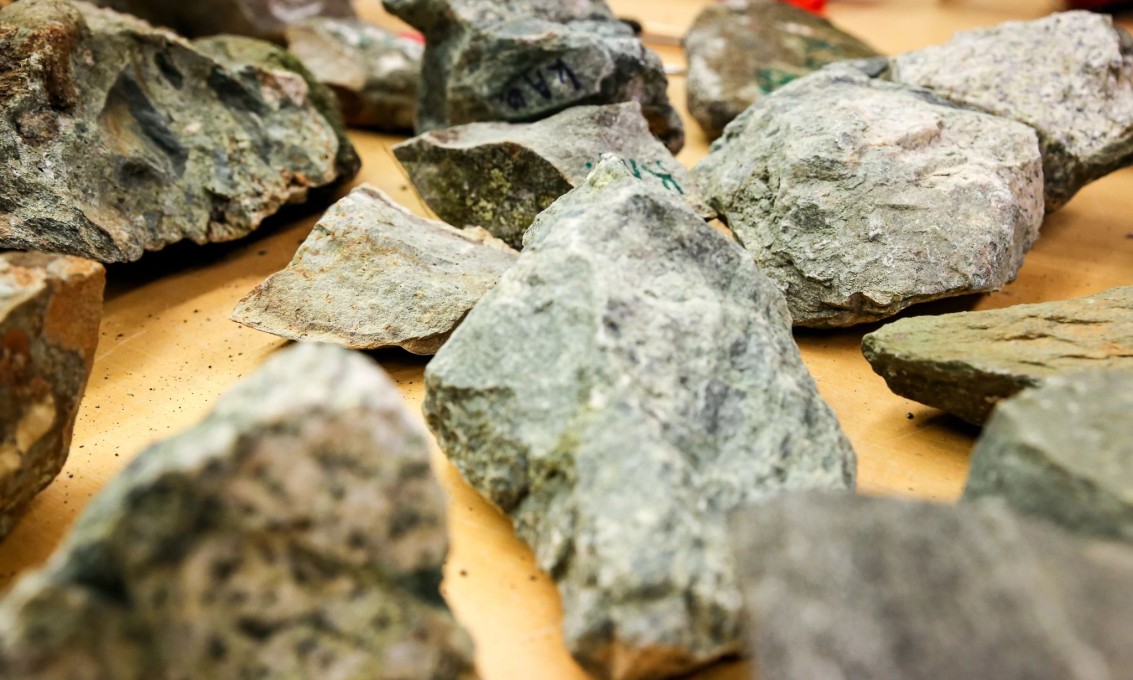The Faculty of Science and Technology at UiS has several laboratories within the field of geology and reservoir. Here is an overview of relevant equipment and facilities.
These study programmes use the laboratories in teaching:
X-ray diffraction (XRD)
The XRD laboratory conducts qualitative and semi-quantitative analyses of samples in powdered or solid form to identify and quantify crystalline phases in minerals and inorganic materials.
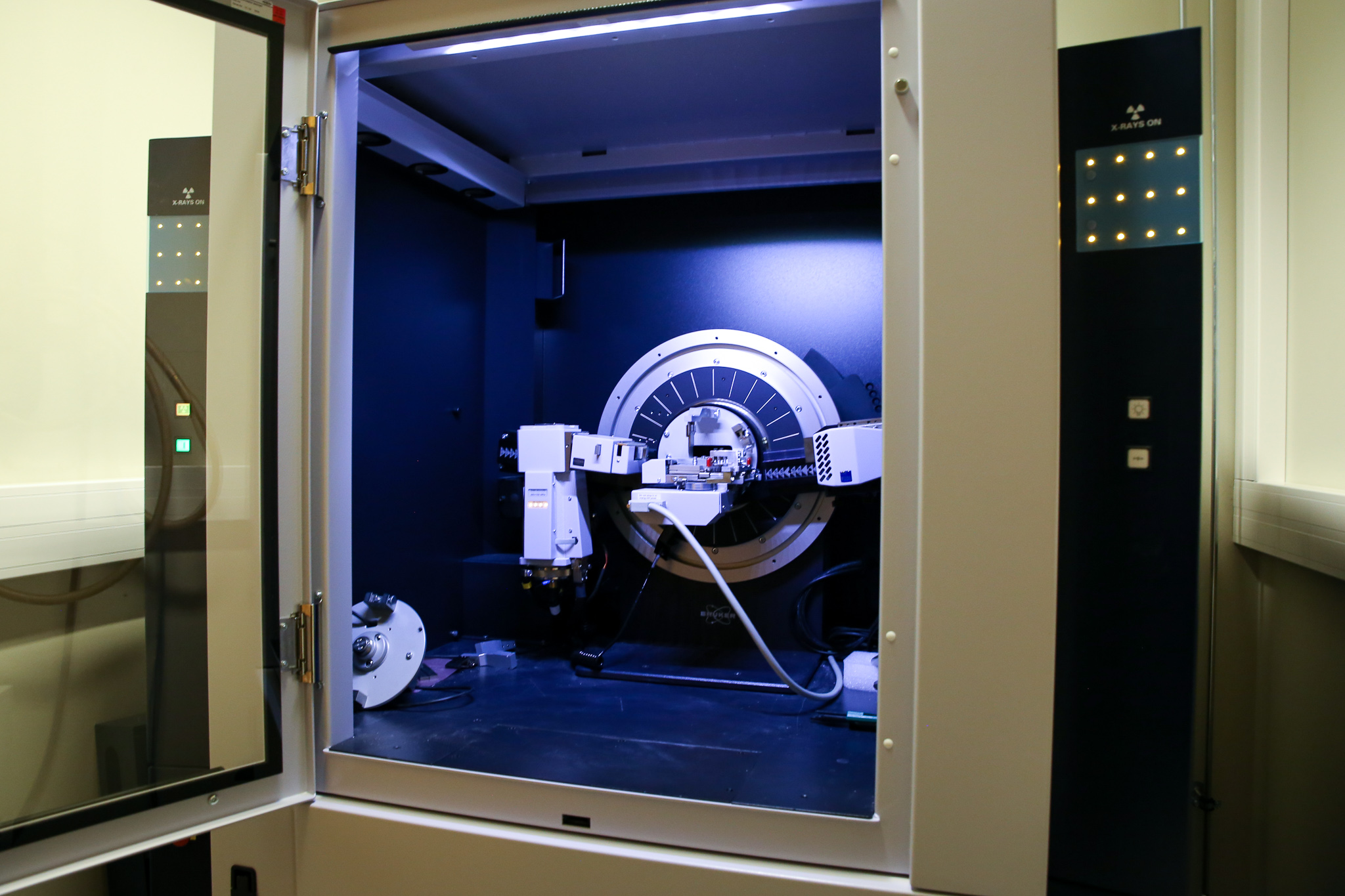
When the sample is analysed using XRD, it will produce a pattern that functions as a sort of fingerprint. This can then be compared with a large database of the different patterns of known materials. The laboratory has different holders for different types and quantities of materials. The laboratory is mainly used by students and staff, although it is also used by external customers.
Contactperson: Caroline Ruud
Core lab
The core lab contains equipment for preparing test plugs of different types of rock and triaxial cells to study the mechanical properties of these types of rock under different test conditions.
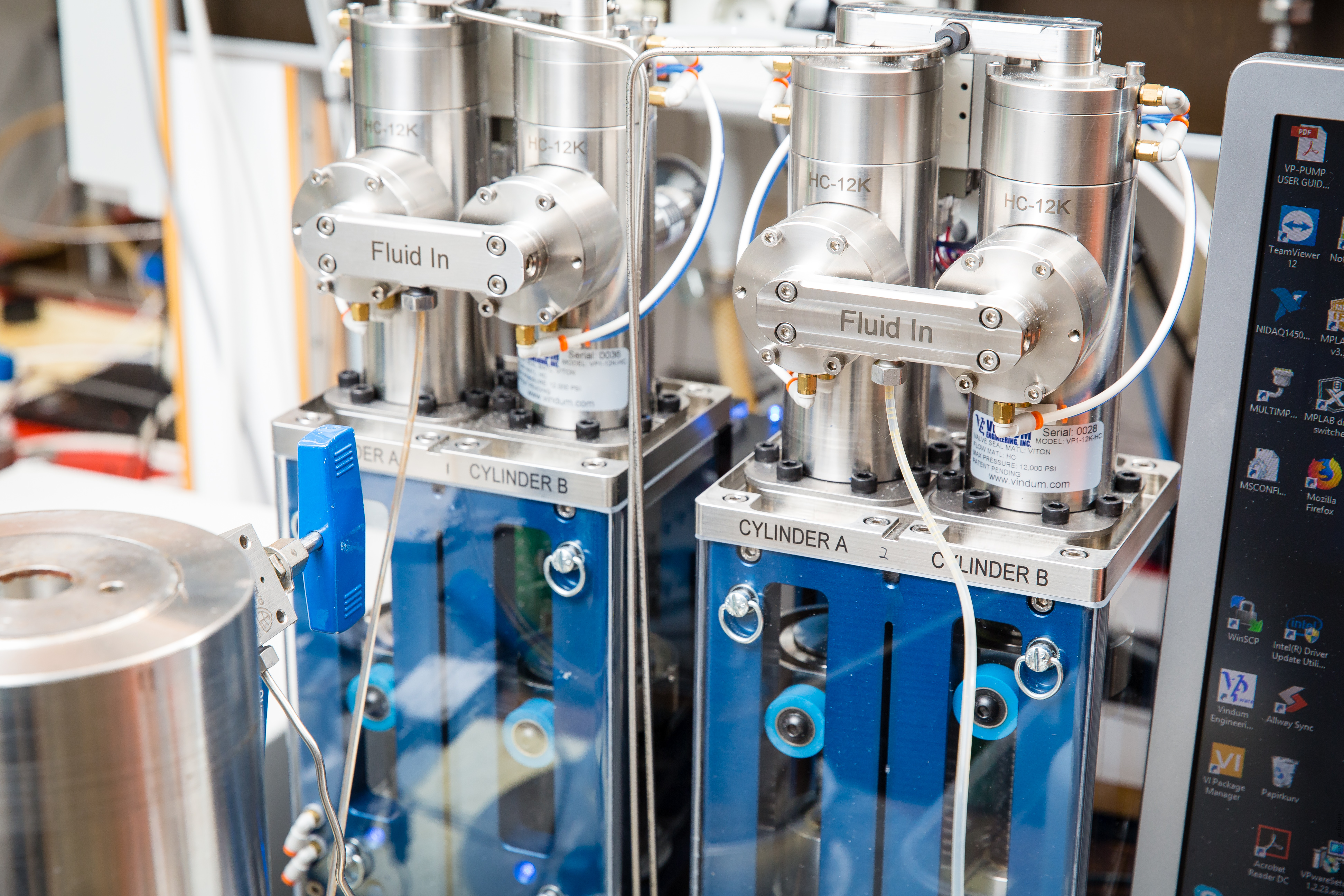
For example, in the case of triaxial cells, the confining pressure, capping pressure, pore pressure and temperature of an oil reservoir are simulated. This allows users to study the mechanical behaviour of different types of rock under real reservoir conditions. Since liquids or gas can also be injected through core plugs mounted in triaxial cells, users can perform tests linked to permeability, CO2 storage and enhanced oil recovery/improved oil recovery (EOR/IOR). The laboratory is mainly used for research in bachelor's, master’s and doctoral degree programmes. The core lab also carries out commissions for external contractors.
Contactperson: Reidar Inge Korsnes
Thin sections and milling
The laboratory for preparing geological samples has equipment for preparing and conducting petrographic analysis of thin sections, as well as other preparation methods such as casting in epoxy (with or without colour) under vacuum, grinding and polishing, crushing/ milling samples, and particle size distribution analysis.
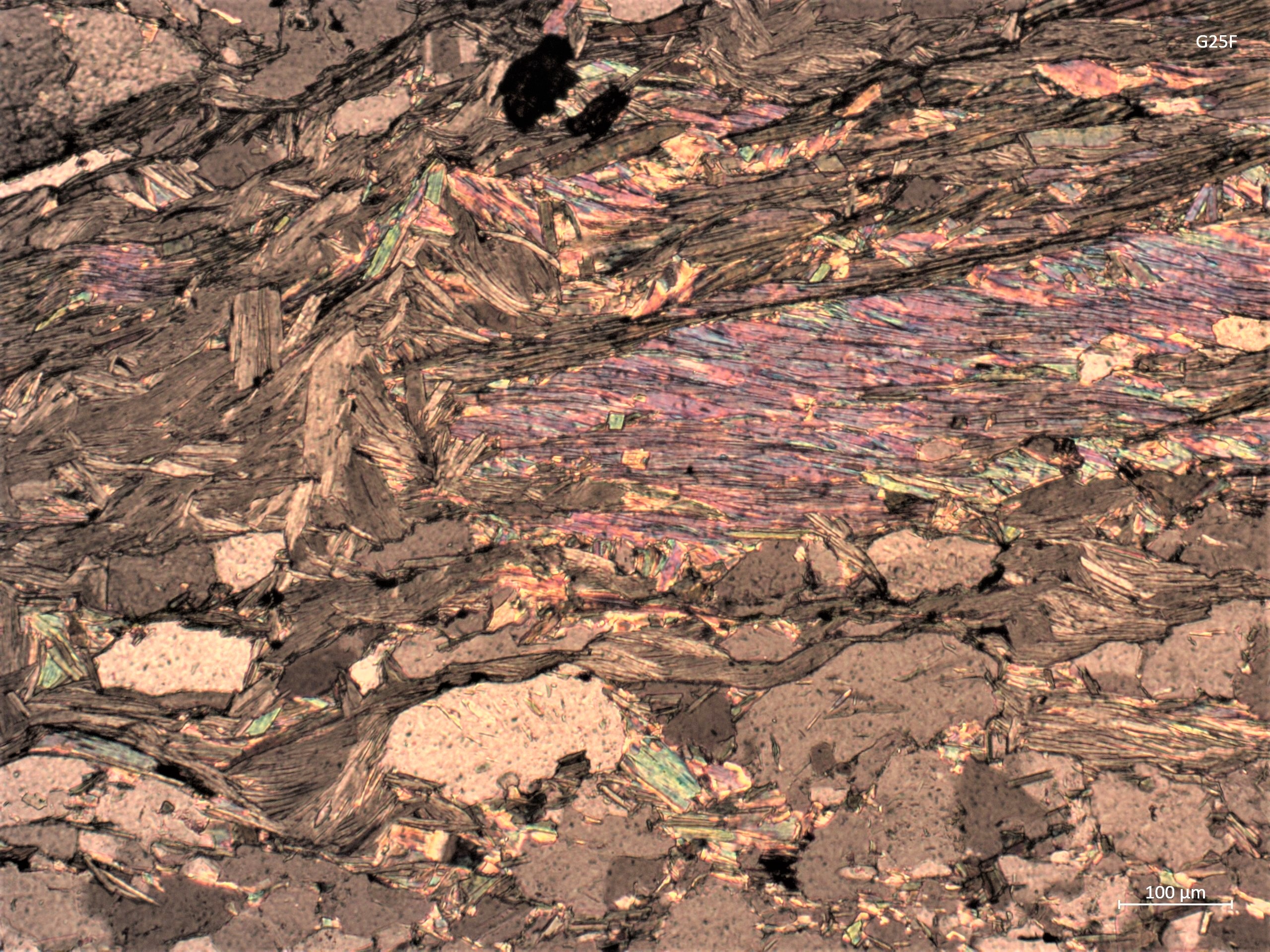
Good sample preparation is important for further analysis using optical microscopes and electron microscopes. The laboratory can prepare both covered and polished thin sections.
The laboratory is mainly used by students and staff. Some analyses are also carried out for other research departments and industry.
Contactperson: Caroline Ruud
Mineral separation
In the laboratory for mineral separation, the specific weight and magnetic properties of minerals are exploited to extract specific minerals from crushed rock samples. This is mainly done so minerals can be studied in detail and to decide the age of a rock using, for example, the uranium-lead method.
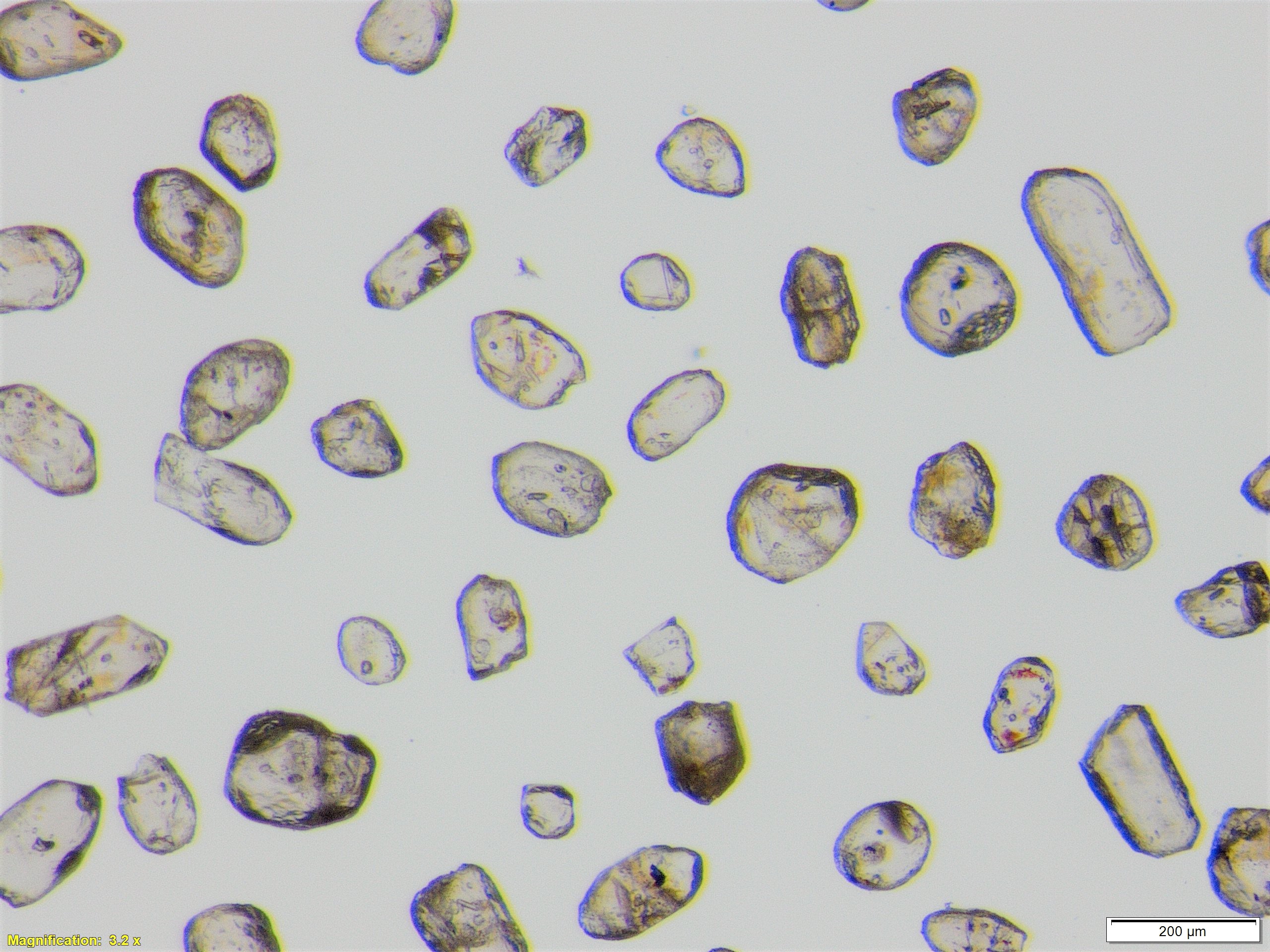
The laboratory at UiS uses two different types of heavy liquids as well as a Frantz magnetic separator to enable isolating desired minerals. It also has microscopes fitted with cameras so various samples or minerals can be studied in detail. The work is mainly carried out for students and staff. External commissions are also carried out for other research departments and for industry.
Contactperson: Caroline Ruud
Enhanced / improved oil recovery (EOR / IOR)
The EOR/IOR laboratory contains equipment and set-ups used for experimental research into increased petroleum extraction. The activities help to increase the understanding of, for example, liquid flow in porous media. The laboratory is used for both research and teaching.
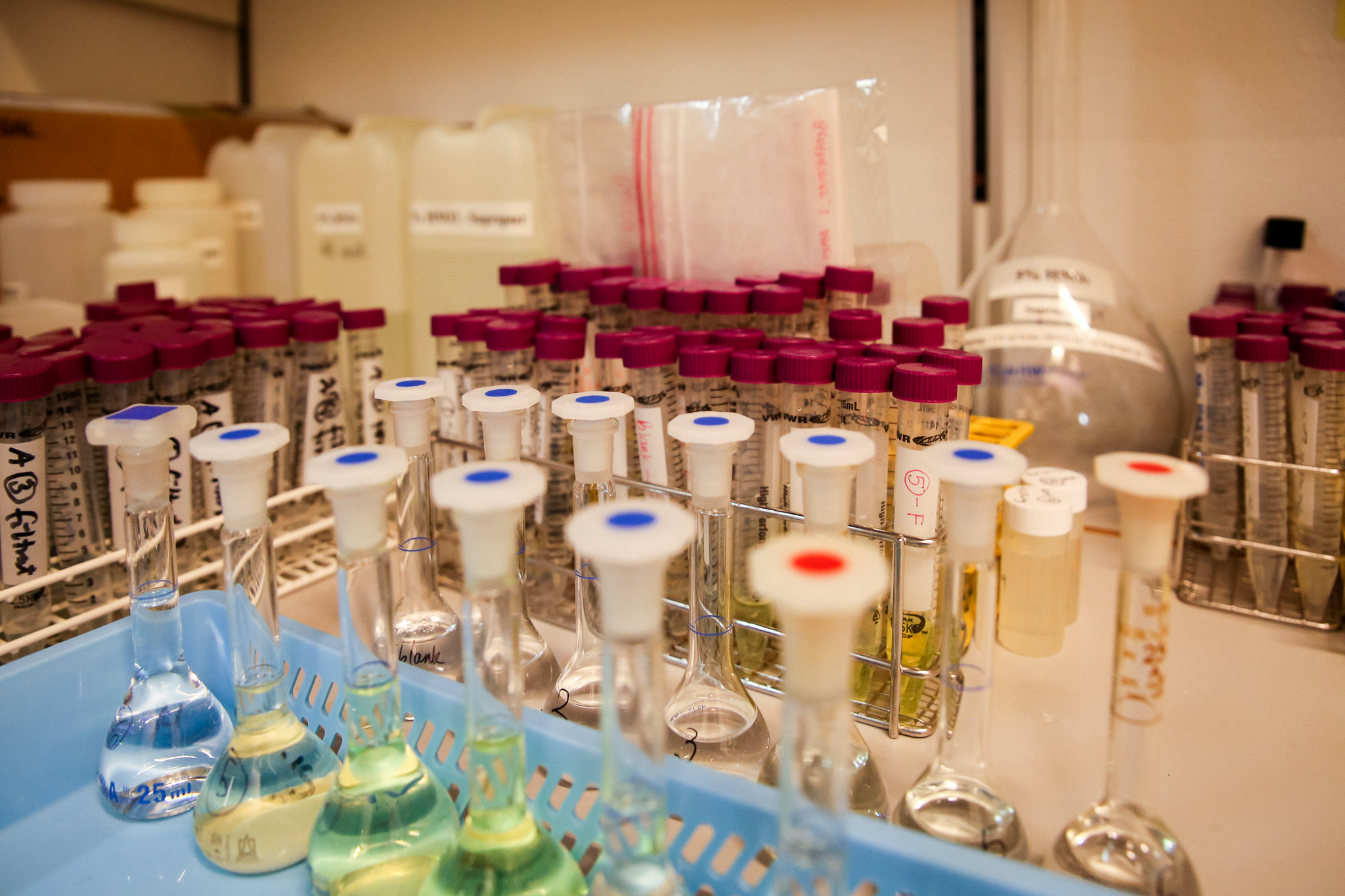
Contactperson: Skule Strand
Geotechnics
The geotechnical laboratory conducts investigations related to identifying and classifying soils, as well as analyses of the mechanical properties of soils. The laboratory is used for both research and teaching.
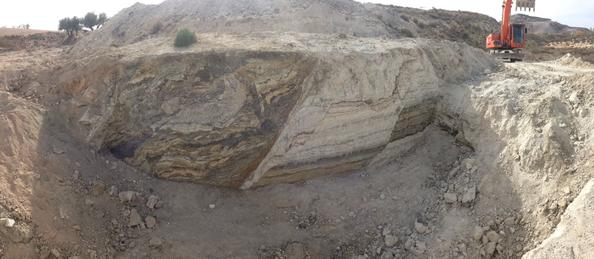
Sieve shaker analysis is used to determine grain size and quantities within given grain intervals. Segmentation testing is conducted using a hydrometer to study material grading for materials with a grain size of smaller than 0.063mm. Users can also prepare undisturbed clay samples and determine shear strength through uniaxial pressure testing or cone experiments. In the case of clay samples, liquid limits and plasticity limits can also be studied. The laboratory also has equipment for determining the density of clay, sand, aggregates extracted from asphalt and similar materials (finer than 4.0mm).
Contactperson: Guzman Cruz Rodriguez
Near-surface geophysics
The near-surface geophysics laboratory has a range of geophysical measurement equipment for both onshore and offshore applications. The available instruments and equipment can be used to measure subsurface responses with both seismic and electromagnetic waves. The laboratory offers autonomous platforms and has developed an autonomous catamaran that can be equipped with various instruments.
For water, the laboratory has a high-frequency CHIRP sonar (10-20 kHz). This is used for both archaeological and geotechnical purposes and provides a good picture of shallow subsurface layers. There is also a low-frequency source (Boomer), with a frequency range of 700-2000 Hz. This is used for geotechnical purposes at sea and provides a good picture of deeper subsurface layers. A ground-penetrating radar (80 MHz) is used onshore for archaeological and geotechnical purposes. This provides a good picture of the subsurface using electromagnetic waves. The laboratory is also equipped with 24 wireless three-component geophones that use a 5kg sledgehammer as the seismic source.
Contactperson: Wiktor Waldemar Weibull
Geodesy / Lidar
The geodesy and Lidar laboratories support various laboratory and field activities across departments. Lidar can be used for 3D modelling based on laser technology.
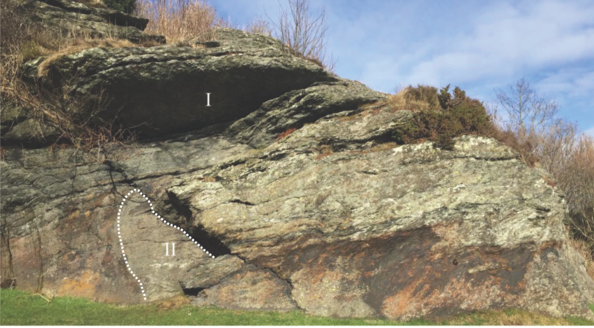
3D models can be used to interpret geology and perform highly accurate measurements. A series of models allows surface changes to be detected (for example, when mapping avalanche risk). Lidar is also an important tool for urban planning, as well as discovering and preserving cultural sites (for example, archaeological finds).
Contactpersons: Sven Roemer and Lisa Jean Watson (LIDAR)
Data- and geomodelling
The data- and geomodelling laboratory has advanced equipment for research, teaching and student-based activities within the field of subsurface interpretation.
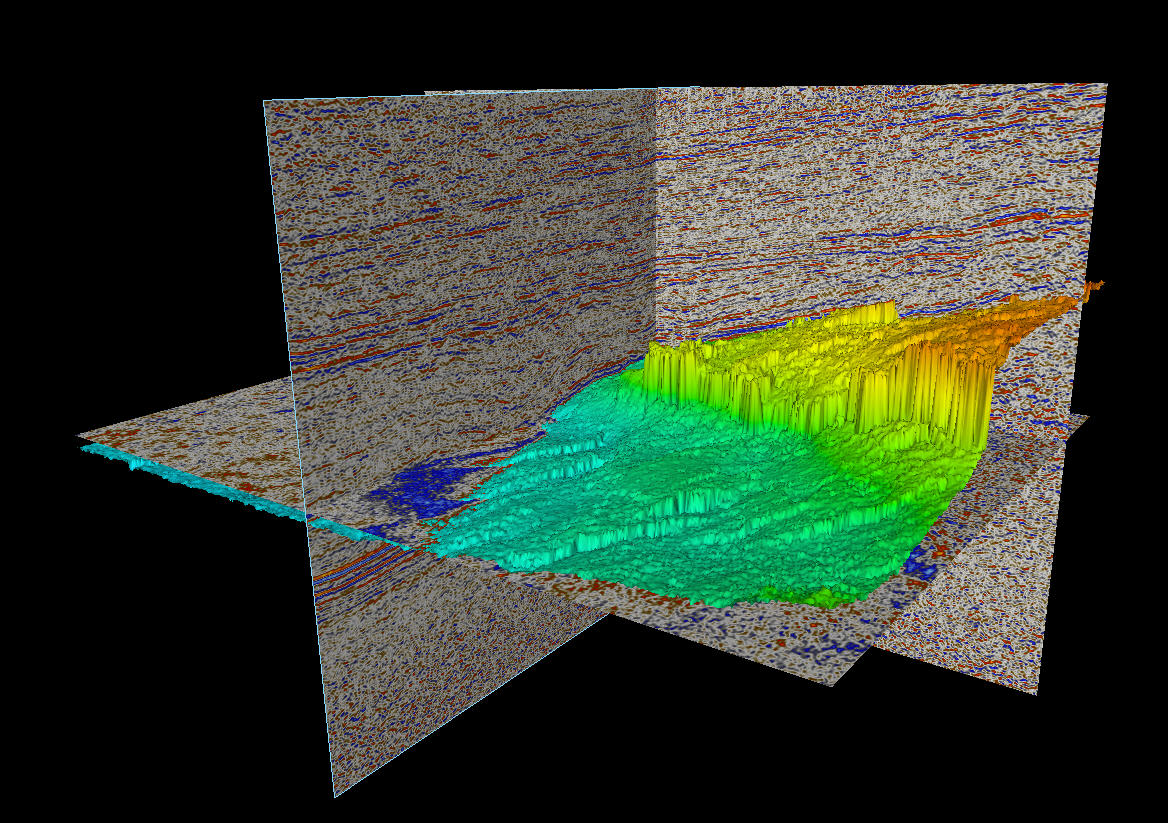
The laboratory also enables subsurface conditions/porous media to be simulated and interpreted using both commercial and open source software.
Contactperson: Andreas Habel
You might also be interested in:
Energy students awarded for their efforts
Repsol awarded a total of four prizes and NOK 120,000 to master students at University of Stavanger.
New methods for characterization of impurities in chalk
Tine Vigdel Bredal has investigated different methods for analyzing chalk at core level and right down to the smallest s...
UiS students won the Laurie Dake Challenge
Master students from University of Stavanger won the prestigious student competition during the geology conference EAGE ...
He is Energy Professional of the Year
Reidar Bratvold won the prize as Energy Professional of the Year at the SPE gala.
Highlights from the first UiS Petro-Games
In a riveting showcase of industry knowledge and teamwork, the inaugural UiS Petro-Games competition proved to be a reso...
Analytical Solutions Toolbox for Multiphase Core Analysis
Developing a digital toolbox for Special Core Analysis (SCAL).
Seismic inversion methods for reservoir characterisation
Nisar Ahmed has developed a workflow for seismic inversion methods to estimate the rock-properties in a reservoir.
Impact Case: The National IOR Centre of Norway
The National IOR Centre has provided cost efficient and environmentally friendly solutions for improved oil recovery on ...
Special Core Analysis – Modeling, Experimental Design and Upscaling
Prediction of subsurface multiphase or single-phase flow processes is challenging, but important for oil and gas product...
Industry awards to energy students
Repsol and Vår Energi awarded a total of nine prizes and NOK 350,000 to bachelor and master students at UiS.
What does the energy industry need?
Researchers at University of Stavanger have asked the industry to define their education needs in the years to come.
Energy Norway 2023 summed up
This year's conference theme: Subsurface for energy security and sustainability.
Understanding the initial wettability of reservoirs
Panagiotis Aslanidis defended his thesis on wettability for core analysis. The purpose of his research was to link reser...
Twinning to Sustainable Energy Transition (Twinn2SET)
The European Union is facing a pressing challenge to transition into a carbon neutral economy by 2050. Researchers from ...
Kick-off for new energy transition project
The European Union is facing a pressing challenge to transition into a carbon neutral economy by 2050. Researchers from ...
Defended his thesis on reservoir optimization
Micheal B. Oguntola has studied optimization and modelling of enhanced oil recovery injection strategies in his PhD proj...
Defining Future Subsurface Education Needs in Collaboration with the Energy Industry
This project (SUBSET) aims to increase the relevance of subsurface course content to actual needs in the energy indust...
Subsurface Utilization for Renewable Energy
The Subsurface Utilisation and Renewable Energy group addresses the latest issues related to the energy transition, unde...
